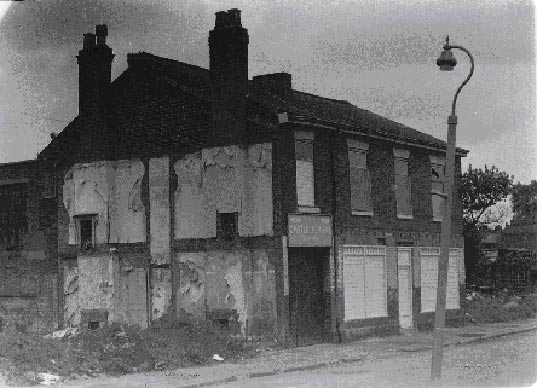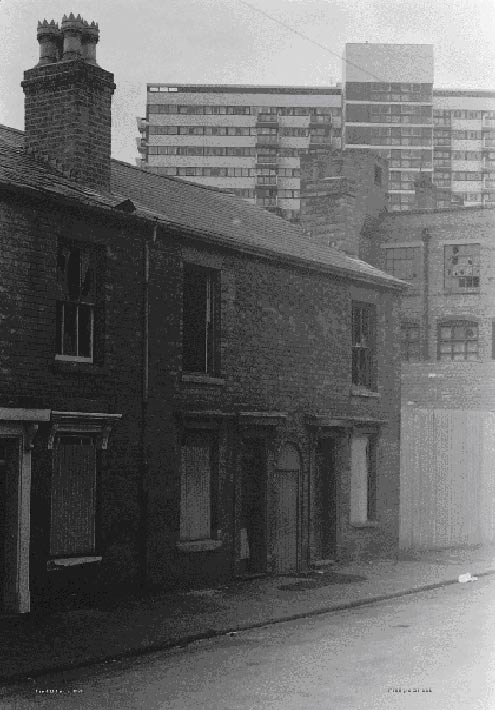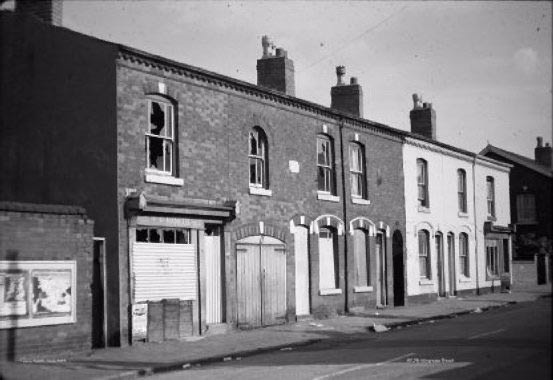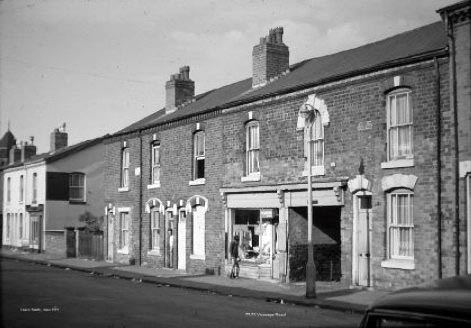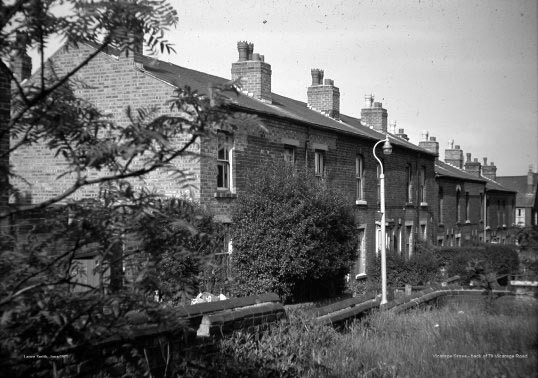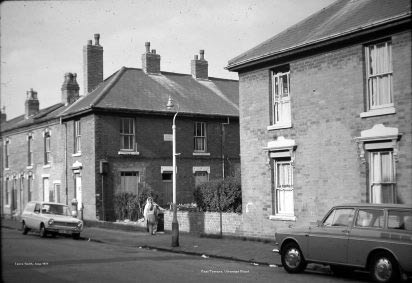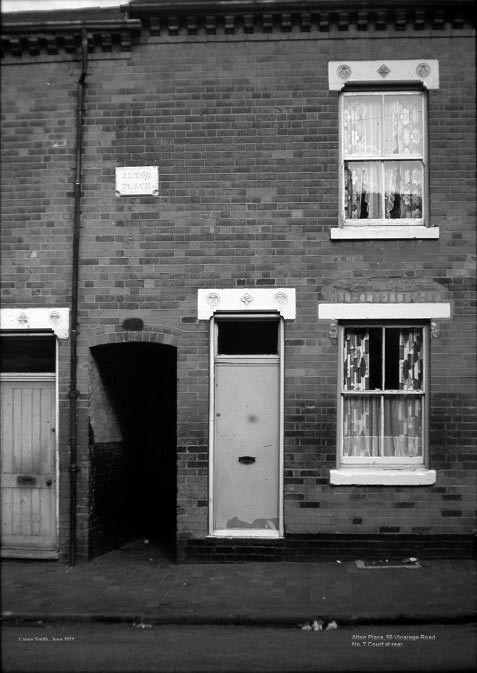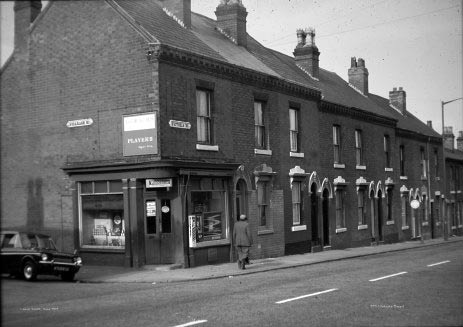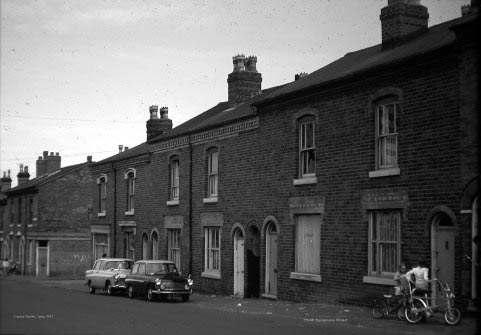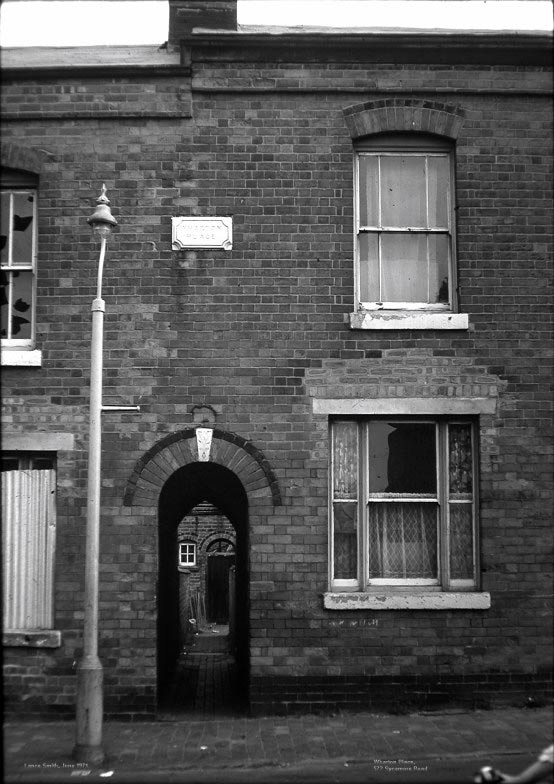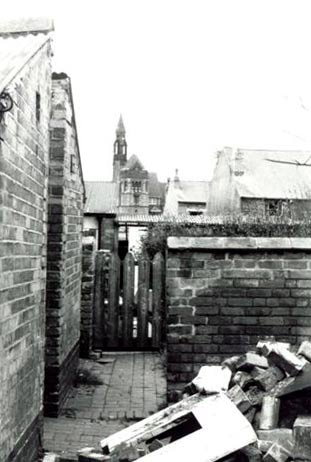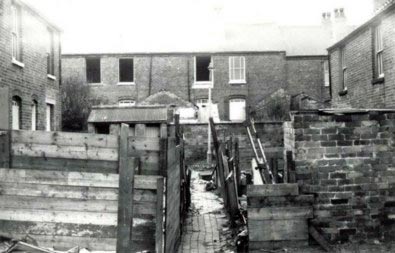Development of aston 1897/1900s - Planning applications >>>
aston Facts >>>
1960s aston Re-Development >>>
aston in Ruins a Poem by John Houghton >>>
The Photograph a Poem by Rod Birch >>>
Demolition In Ernest by Fred Miller >>>
Development of aston 1897/1900s - Planning applications
Mrs Hodgetts Phillips Street shop front July 20 1899
Ivy cottages aston Lane bakehouse July 24 1899
Midland Vinegar Tower road new vat shed July 24 1899
Tubes limited shopping Rocky Lane July 24 1899
Home and colonial 162 High Street stone room august 1899
Valor company store shed Rocky Lane
St Mary's new vestry aston Road april 1902
Rebuilding of the Barton arms December 2 1899
Trustees of the Primitive Methodist chapel New Street February 22 1902 alteration to existing building plans revised no 1045
The Old House That Jack Built High Street aston February 21 1898 alterations to existing building plan no 820 approved
Gospel Hall Park lane opened 1892 seating 73 demolished 1970's rebuilt top end of Park Lane 1979
St Mary's school built 1860 by 1894 it had 804 pupils; the girls and boys had mixed lessons but were segregated at play in the playground.
St Mary, s church built 1863 it's maligned square tower was added in 1882 they had five Sunday services due to the amount of parishioners they had both these buildings where demolished in the name of progress in the 1970's.
aston had it's own motor manufacture at the beginning of the 1900's it was the Premier Motor Works at the junction of aston Road and Dartmouth Street.
Miller Street depot opened in 1904 with room for 104 tramcars its repair and tram yard was on the other side of the road opposite the tram depot.
Joseph ansell and his sons founded ansells Brewery 1881at Lichfield Road aston cross it became a limited company in 1889 with a capital of £200,00, they also bought out Holt Brewery 1934
Burbury Street recreation park covered just 4 acres, 1 rod and 4 perches, given by the late William Middlemore esquire and opened in 1877 for the use of the people of the local area. The Globe electric theatre opened 4 august 1913
Ellen Knox Memorial Hall Tower Road next door to The Midland Vinegar company it was a community and social gathering place used by the cubs and scouts, also they would serve dinners for the local residents.
company's run in Tower Road by Mr Edwin S Moore the owner and manager of The Midland Vinegar company, 255 Tower Road Garton. F G and company sauce manufacture 216 to 266 Tower Road, Tower Yeast company/Garton, F G and company. Midland Vinegar company Stores and stables 151 Tower Road.
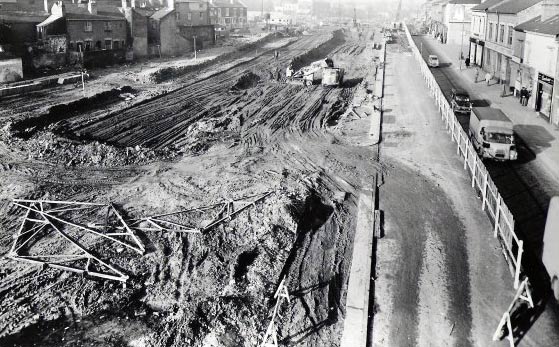
High St looking towards Six Ways
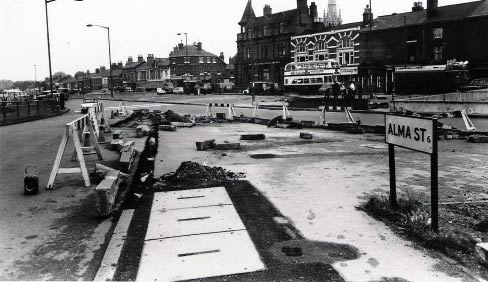
alma St looking towards Six Ways
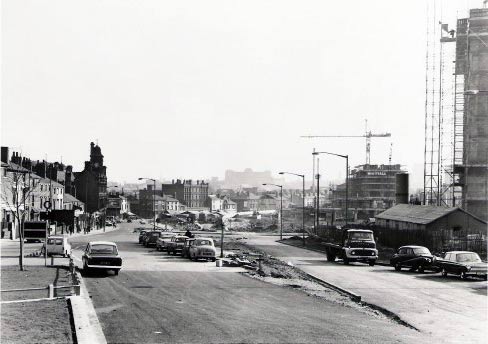
High St looking towards the Bartons arms
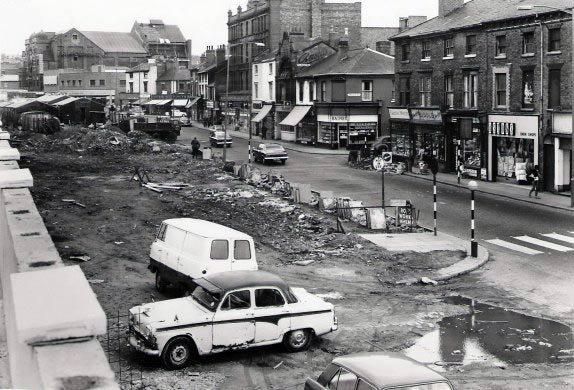
Newtown Row House That Jack Built on the right
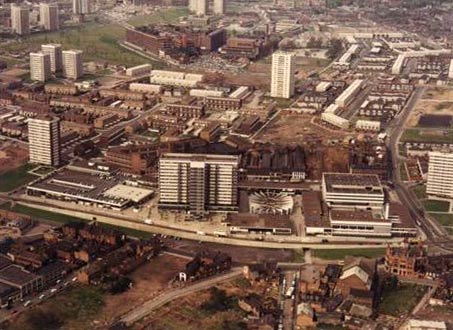
aerial Shot Newtown Shopping complex
Like so many other places in our town
Our old aston as been knocked down
They did what the bombers never did
They have so saddened me and our kid
They used our old bricks for the expressway
and that concrete road is still here today
No houses along this Lichfield Road
Was this all along the planner's code
They broke up our tight knit community
They all said it was good for a new city
Friends were scattered so far and wide
Now we all live in the great divide
But they forgot one thing for a start
Though divided we still have our aston heart
We look at the ruins of aston we knew
With all our memories for me and you
From far and wide it can still be seen
The malaise of the planner's pipe dream
John Houghton 2003
Look at this photo, it's of our old abode
Taken just before they
ripped up our road
as our home it had stood for many's the year
There's a place
in my mind that still resides there
It's a happy home, in happy times
Some
called it a slum but to me it was fine
a black and white photo is all that remains
Of our Phillips Street home and all it contained
It's there in the picture, we
loved it so much
Just a glimpse of the past, just out of hands touch
Rod Birch 2003
Demolition In Ernest by Fred Miller
Between 1969 and 1971 a small group of us were doing an industrial archaeology course (the study of the physical evidence for industrialisation - factories, machinery, workers' housing, etc).
as part of that course, a particular study was made of housing in aston. council housing was unknown before the end of the 19th century, and in many towns, entire streets of houses were built by private builders of a uniform kind, every street, every house looked exactly the same.
In parts of Birmingham,but particularly aston, this was not the case. Here, it was more usual for small-scale speculative builders to buy a small plot of land and put up 2, 4, 6, and sometimes more houses.
For houses built in the middle of the Victorian period, more than 6 is unusual in aston.
check the photos for different houses in the same street, and check the door and window details -there will be differences. I and my friend Lance Smith went out on a few occasions independently of the group, and the photos here are what we recorded at the time.
Towards the end, the demolition of the area was reaching a peak, and we were lucky to capture it before it was all swept away.
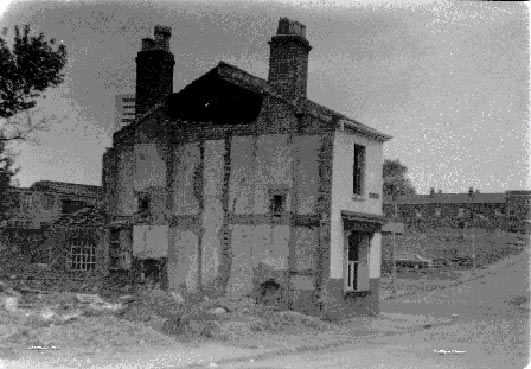
Looking Towards Upper Webster Street
